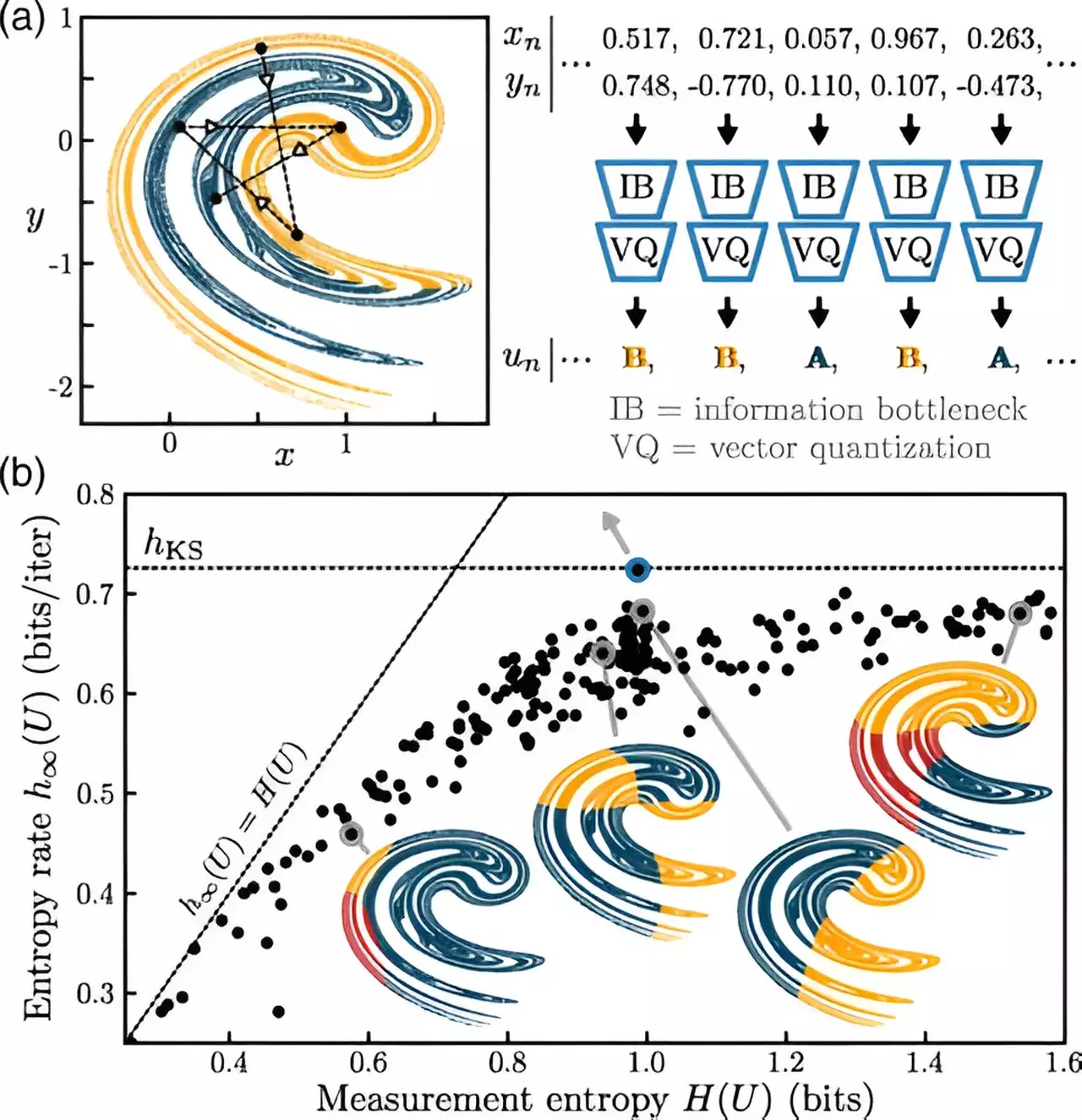

For centuries, humans have been captivated by the enigma of chaotic systems, from the tumultuous whims of weather patterns to the intricate movements of celestial bodies. Despite our best efforts, achieving precise forecasts in these systems has remained elusive. The complexity arises from the very nature of these systems, which are dictated by nonlinear characteristics; this introduces a level of unpredictability that challenges even the most sophisticated models. Dani S. Bassett, a beacon in the field of Bioengineering, along with postdoctoral researcher Kieran Murphy, has embarked on a groundbreaking exploration of how machine learning can bridge gaps in our understanding of chaos.
At the core of chaotic systems lies nonlinearity, a concept that eludes simple explanation. Unlike linear systems, where inputs and outputs maintain proportional relationships, chaotic systems exhibit behaviors that evolve in unpredictable ways. Kieran Murphy illustrates this vividly by likening it to a game of telephone, where information deteriorates as it is replicated. In this analogy, the initial message becomes distorted, leading to further complications down the line. It’s a stark reminder that our attempts to predict events, especially in meteorology, suffer significantly from the foundational chaos of the data we rely on.
Murphy emphasizes that the very tools we deploy, such as atmospheric probes designed to gather data on wind and precipitation, cannot encompass the entire chaotic system. This incompleteness cultivates a growing uncertainty, particularly when forecasts extend beyond a few days. Thus, while our short-term predictions may appear accurate, the complexity of these systems escalates the degree of unpredictability when looking further into the future.
In light of these challenges, Murphy and Bassett’s recent work published in Physical Review Letters is nothing short of revolutionary. Their innovative application of machine learning to classic chaos models signifies a paradigm shift. By meticulously analyzing controlled systems, devoid of extraneous variables, they have begun crafting what they term “information maps.” These maps serve not only to highlight where data is generated within chaotic systems but also to pinpoint critical data points amidst a vast sea of seemingly unrelated information. This approach not only enhances theoretical modeling but also brings us a step closer to predictive accuracy in real-world scenarios.
Machine learning, renowned for its capability to decipher patterns within extensive datasets, is being deployed by Murphy in an unconventional manner. Rather than sharpening predictive power, he is focused on distilling complex chaotic systems into digestible, quantifiable insights. Using deep learning algorithms, the researchers can isolate and magnify essential dynamics that would otherwise elude human understanding. In essence, this transformation from chaotic data to coherent information represents a significant leap forward in our quest to decode complexity.
One of the pioneering aspects of their research is the exploration of multivariate information theory, a method that allows them to analyze multiple information sources not only at a single time point but across time. In this expanded view, time becomes an integral variable, adding layers of depth to their analysis. This holistic approach is particularly noteworthy when applied to the human body and brain, where dynamic processes interact and evolve.
As Murphy and Bassett delve into these systems, they are not merely observing data; they are constructing frameworks that could redefine our understanding of health and well-being. The implications stretch far beyond academic curiosity; they hold potential solutions for pressing issues like mental health diagnostics and treatment. The intricate dance of information within the brain could soon be understood through the lens of chaos theory, unveiling insights that inform therapeutic approaches and enhance cognitive health.
While certainty may forever elude us, the integration of chaos theory with machine learning allows for an exhilarating glimpse into a future where we might understand and predict the unpredictable. The implications of this research extend from weather forecasting, providing communities with better preparedness against natural disasters, to medical diagnostics, where understanding complex body systems can lead to timely interventions.
As we advance our capabilities in navigating chaotic systems, we not only enhance our predictive models but also embark on a journey of human understanding, seeking to interpret complex patterns in a world that often feels overwhelmingly intricate. With each breakthrough, Murphy and Bassett illuminate paths toward innovative solutions, demonstrating that chaos, once merely an insurmountable hurdle, may become a wellspring of opportunity for progress.
Recent advancements in the realm of theoretical physics have set the stage for a more…
Plastic waste is an environmentally pressing issue, with millions of tons of materials like Styrofoam…
Adolescence is a tumultuous period marked by transformation—not just physically, but neurologically as well. A…
Recent findings from a collaborative study led by the University of East Anglia (UEA) and…
In an era where the digital landscape is continuously evolving, the advent of quantum technology…
As we navigate the complexities of modern life on Earth, the looming threat of cosmic…
This website uses cookies.